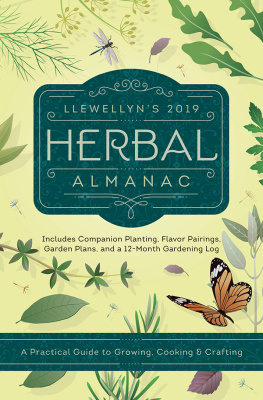Elizabeth Wotton N.D. - Flu therapy: a natural and herbal approach
Here you can read online Elizabeth Wotton N.D. - Flu therapy: a natural and herbal approach full text of the book (entire story) in english for free. Download pdf and epub, get meaning, cover and reviews about this ebook. year: 2000, publisher: Storey Publishing, LLC, genre: Home and family. Description of the work, (preface) as well as reviews are available. Best literature library LitArk.com created for fans of good reading and offers a wide selection of genres:
Romance novel
Science fiction
Adventure
Detective
Science
History
Home and family
Prose
Art
Politics
Computer
Non-fiction
Religion
Business
Children
Humor
Choose a favorite category and find really read worthwhile books. Enjoy immersion in the world of imagination, feel the emotions of the characters or learn something new for yourself, make an fascinating discovery.

- Book:Flu therapy: a natural and herbal approach
- Author:
- Publisher:Storey Publishing, LLC
- Genre:
- Year:2000
- Rating:4 / 5
- Favourites:Add to favourites
- Your mark:
- 80
- 1
- 2
- 3
- 4
- 5
Flu therapy: a natural and herbal approach: summary, description and annotation
We offer to read an annotation, description, summary or preface (depends on what the author of the book "Flu therapy: a natural and herbal approach" wrote himself). If you haven't found the necessary information about the book — write in the comments, we will try to find it.
Flu therapy: a natural and herbal approach — read online for free the complete book (whole text) full work
Below is the text of the book, divided by pages. System saving the place of the last page read, allows you to conveniently read the book "Flu therapy: a natural and herbal approach" online for free, without having to search again every time where you left off. Put a bookmark, and you can go to the page where you finished reading at any time.
Font size:
Interval:
Bookmark:
A Natural and Herbal Approach
Elizabeth Wotton, N.D.

The mission of Storey Communications is to serve our customers by publishing practical information that encourages personal independence in harmony with the environment.
Editing and text production by Nancy W. Ringer
Cover illustrations by Laura Tedeschi
Cover design by Carol J. Jessop (Black Trout Design)
Text illustrations on by Alison Kolesar
Copyright 2000 by Storey Communications, Inc.
All rights reserved. No part of this bulletin may be reproduced without written permission from the publisher, except by a reviewer who may quote brief passages or reproduce illustrations in a review with appropriate credits; nor may any part of this bulletin be reproduced, stored in a retrieval system, or transmitted in any form or by any means electronic, mechanical, photocopying, recording, or other without written permission from the publisher.
The information in this bulletin is true and complete to the best of our knowledge. All recommendations are made without guarantee on the part of the author or Storey Communications, Inc. The author and publisher disclaim any liability in connection with the use of this information. For additional information please contact Storey Communications, Inc., Schoolhouse Road, Pownal, Vermont 05261.
Storey books and bulletins are available for special premium and promotional uses and for customized editions. For further information, please call the Custom Publishing Department at 1-800-793-9396.
Printed in the United States
Library of Congress Cataloging-in-Publication Data
Wotton, Elizabeth.
Flu therapy: a natural and herbal approach / Elizabeth Wotton.
p. cm. (A Storey country wisdom bulletin; A-266)
ISBN 1-58017-348-9 (pbk. : alk. paper)
1. InfluenzaAlternative treatment. 2. HerbsTherapeutic use. 3. Naturopathy. I. Title. II. Series.
RC150 .W64 2000
616.20306dc21 00-061253
Each year, millions of people suffer from the influenza virus. Most recover in a matter of days, but many suffer complications that can lead to long-term problems pneumonia, encephalitis, and even death. And while conventional medicine is effective at fighting the secondary bacterial infections that can accompany a viral illness, it has little to offer in the way of fighting the flu.
Fortunately, each of us has a built-in network of defense mechanisms that protects us against disease-causing viruses and other infectious microorganisms.
Herbs support this network in a variety of ways. Some herbs contain compounds that kill harmful microbes on contact or stimulate the immune system to increase the activity of white blood cells. Other herbs aid in a more indirect way by thinning congestion-causing mucus to facilitate its excretion, by modulating a fever, or by enhancing resistance to infection. Still others can be used for comfort to alleviate aches and pains, to soothe an upset stomach, or to help induce a more restful sleep.
While there may be times when we need to resort to over-the-counter medications or prescription pharmaceuticals, nature has provided us with a bountiful pharmacy that we can grow in our own backyards. Read on to find out everything you need to know about flu and how herbs can help you prevent and treat it.
Danger Over the Counter
Reyes syndrome (RS) is a serious complication of certain viral infections, including the flu. Children under the age of 15 are most susceptible. Aspirin and other over-the-counter medications that contain salicylates increase a childs risk of RS. Typically occurring 3 to 5 days after a viral infection begins, RS causes persistent vomiting, lethargy, confusion, personality changes, convulsions, and loss of consciousness. Without early diagnosis and treatment, RS can cause brain damage and liver dysfunction. The best treatment is prevention: Never give a child aspirin during a flu infection. Other salicylate-containing medicines to avoid during the flu include Alka-Seltzer, Anacin, Bufferin, Dristan, Excedrin, and Pepto-Bismol.
As the days become shorter and colder, the influenza virus starts warming up for its annual onslaught. For most of the Northern Hemisphere, autumn heralds not only the beginning of the holiday season but also the start of flu season. In the months that follow, travelers crisscrossing the country, cooler temperatures, and increased levels of stress add up to conditions that are ideal for viruses to flourish.
Once viruses gain a foothold, they spread easily from person to person through respiratory droplets, those aerosol vapors that disperse through a sneeze or a cough. For susceptible people, the virus settles in quickly, bringing those familiar muscle aches, fevers, and chills that are the hallmark of the flu.
But the presence of viruses and other infectious organisms in your environment doesnt necessarily mean that youll get sick. Developing a healthful lifestyle, taking precautions to minimize your risk of infection, and knowing how to prevent and manage the flu safely will help you stay healthy no matter what the season.
There are numerous types of viral infections. Many infections commonly referred to as flu are not really caused by influenza viruses. In fact, there are only three identified influenza viruses: influenza type A, type B, and type C.
Types A and B are responsible for epidemics of respiratory illness and are associated with severe illness, complications, hospitalization, and death.
Type C is usually mild and may come and go without symptoms. It does not cause or contribute to epidemics, so it is not considered a serious health threat. Thats why prevention and treatment efforts are targeted at only types A and B.
In the United States, influenza virus infections are most prominent from November through April, peaking between late December and early March. Each year, approximately 108 million people get the flu. Flu outbreaks typically occur in small, localized populations, such as schools, daycare facilities, and families, and last for only short periods of time. And although most people will recover without complications or lingering effects, 1 percent will require hospitalization for severe illness. Of those 1 percent who are hospitalized, about 8 percent will die from complications directly caused by the flu.
Like other viruses, the influenza virus gradually evolves over time so that the virus that was causing illness last year may return this year in an altered form. Thats why no one is ever really immune to the flu. As new viruses, these mutated viruses initially go unrecognized by the immune system. And by the time the immune system has had a chance to respond, the virus is well established and spreading efficiently throughout the surrounding communities.
Thats how epidemics, or localized outbreaks, start. Pandemics, or worldwide epidemics, occur when the structure of a flu virus changes suddenly and dramatically. It becomes sufficiently different from previous flu viruses so that large numbers of people have no immune protection against it. These pandemics are rare but devastating. Although only three pandemics have occurred in the past century, among them they caused more than 20 million deaths worldwide.
Font size:
Interval:
Bookmark:
Similar books «Flu therapy: a natural and herbal approach»
Look at similar books to Flu therapy: a natural and herbal approach. We have selected literature similar in name and meaning in the hope of providing readers with more options to find new, interesting, not yet read works.
Discussion, reviews of the book Flu therapy: a natural and herbal approach and just readers' own opinions. Leave your comments, write what you think about the work, its meaning or the main characters. Specify what exactly you liked and what you didn't like, and why you think so.







